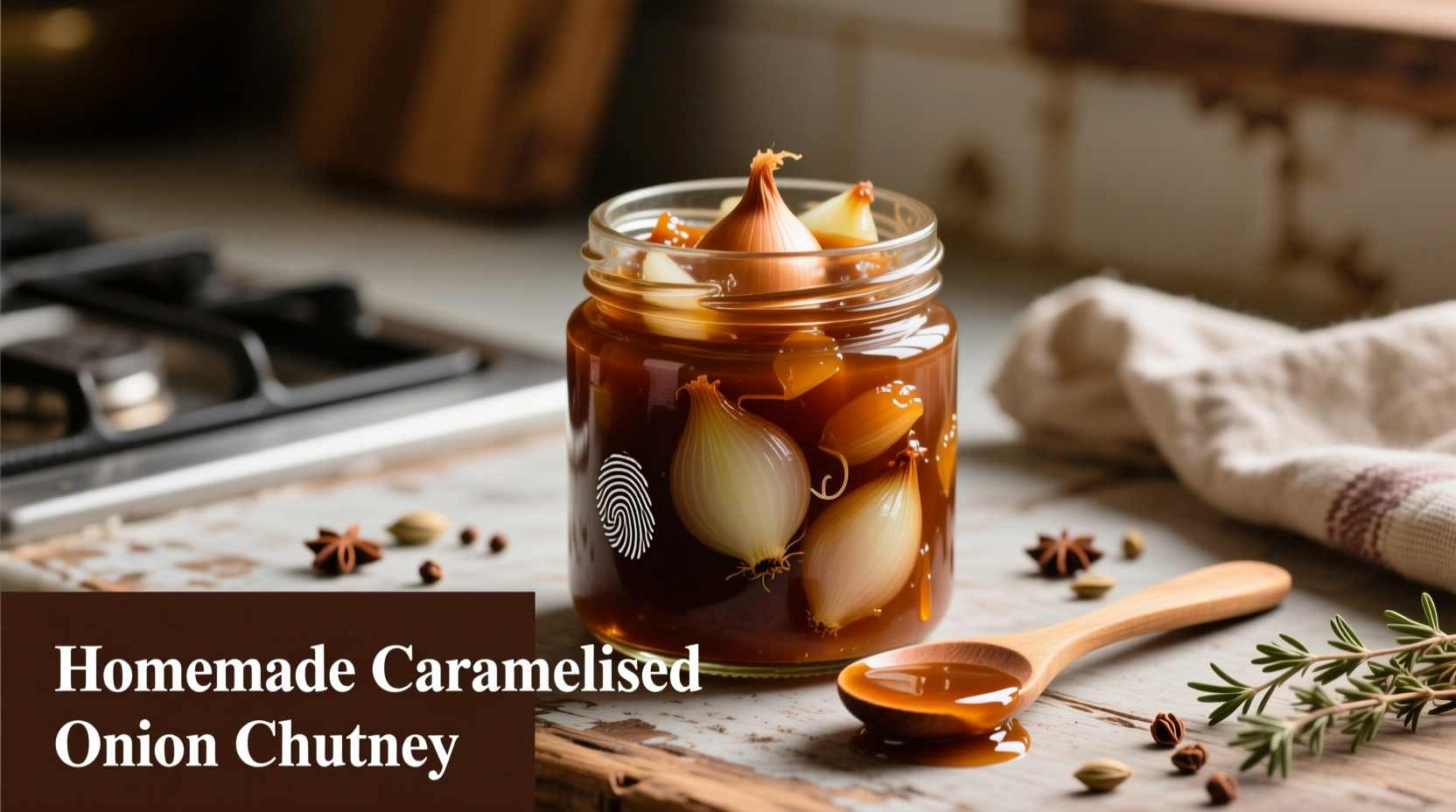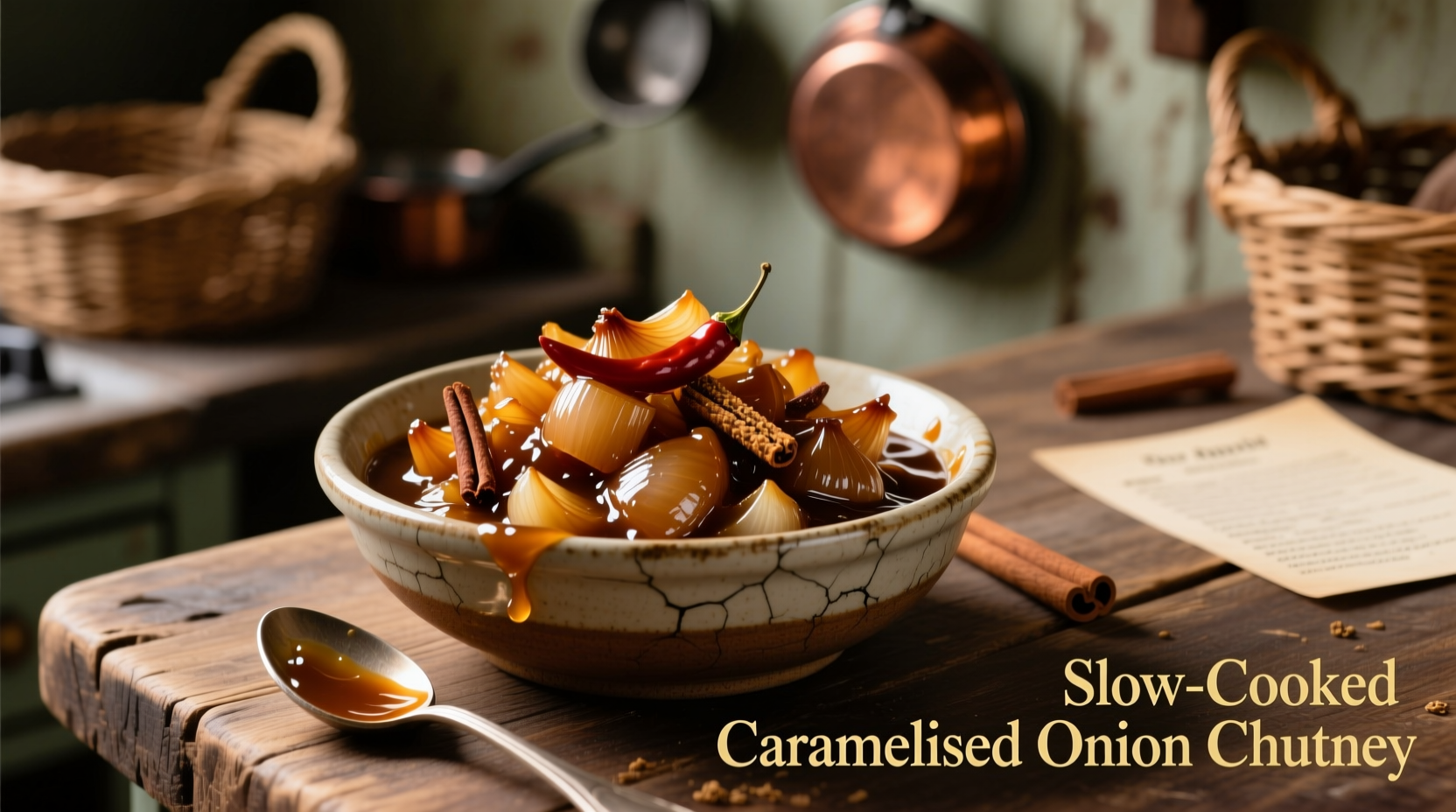The Essential Guide to Caramelised Onion Chutney
When you're searching for caramelised onion chutney recipes that actually work, you need more than just ingredients—you need the science behind perfect caramelisation and practical application tips. Unlike quick "caramelized" versions that merely soften onions, true caramelisation requires patience and technique to develop complex flavor compounds through the Maillard reaction and sugar breakdown.
Why Home-Made Caramelised Onion Chutney Beats Store-Bought
Commercial versions often contain excessive preservatives and artificial flavors that mask the natural sweetness of properly caramelised onions. When you make your own authentic caramelised onion chutney from scratch, you control the sugar content, vinegar balance, and spice profile to match your taste preferences. The difference becomes apparent immediately when you spread homemade chutney on a sharp cheddar sandwich—the deep, complex sweetness complements rather than overwhelms the cheese.
The Science Behind Perfect Caramelisation
Caramelisation isn't merely browning—it's a chemical transformation occurring between 110-180°C (230-356°F) where natural sugars break down into hundreds of flavor compounds. According to food science research from the USDA Agricultural Research Service, the key compounds formed during onion caramelisation include:
| Compound Type | Flavor Profile | Formation Temperature |
|---|---|---|
| Diacetyl | Buttery, creamy notes | 130°C (266°F) |
| Furfural | Nutty, caramel-like | 150°C (302°F) |
| Hydroxymethylfurfural | Deep caramel, molasses | 170°C (338°F) |
Attempting to rush the process by increasing heat creates bitter compounds instead of sweet complexity. Professional chefs understand that slow caramelised onion chutney preparation takes 45-60 minutes of patient cooking to develop these desirable flavors without burning.

Your Foolproof Caramelised Onion Chutney Recipe
This tested recipe yields approximately 4 cups of chutney with balanced sweet-savory notes that pair beautifully with both meats and vegetarian dishes:
Ingredients You'll Need
- 1.5 kg (3.3 lbs) yellow onions, thinly sliced
- 150g (¾ cup) brown sugar
- 300ml (1¼ cups) malt vinegar
- 150ml (⅔ cup) apple cider vinegar
- 2 tsp sea salt
- 1 tsp black peppercorns
- ½ tsp mustard seeds
- 2 bay leaves
- 1 star anise (optional for depth)
Step-by-Step Preparation
- Slice onions uniformly (1-2mm thickness) for even cooking
- Sauté slowly in 2 tbsp oil over medium-low heat for 45-60 minutes until deep golden brown
- Add vinegars and sugar, bring to gentle simmer
- Simmer uncovered for 30-40 minutes until thickened
- Remove whole spices and cool before storing
Troubleshooting Common Caramelisation Problems
Understanding the limitations of caramelised onion chutney preparation prevents common kitchen disasters:
- Burning instead of caramelising: Onions contain natural sugars that burn quickly at high heat. Solution: Cook over medium-low heat with occasional stirring.
- Excess moisture remaining: Onions release significant water during cooking. Solution: Cook uncovered to allow evaporation.
- Overly acidic taste: Vinegar dominates the flavor profile. Solution: Balance with additional sugar or honey during final simmering.
- Texture issues: Onions either too chunky or mushy. Solution: Maintain consistent slice thickness and avoid over-stirring during final thickening.
Creative Ways to Use Caramelised Onion Chutney
Move beyond the standard cheese sandwich with these unexpected caramelised onion chutney pairings:
- Breakfast boost: Swirl into scrambled eggs or fold into omelets
- Meat enhancement: Serve alongside roast beef, pork chops, or grilled sausages
- Vegetarian delight: Layer in grilled portobello mushroom sandwiches
- Cheese board essential: Pairs exceptionally with aged cheddar, blue cheeses, and goat cheese
- Unexpected twist: Add a spoonful to burger patties before grilling
Storage and Shelf Life Guidelines
Properly stored homemade caramelised onion chutney shelf life follows these guidelines:
- Refrigerator: 3-4 weeks in airtight container
- Freezer: 6 months (portion into ice cube trays for easy use)
- Canning: 12-18 months when properly processed using water bath canning
Always use clean utensils when serving to prevent contamination. Discard if you notice mold, off odors, or significant color changes.
Regional Variations Worth Exploring
While traditional British caramelised onion chutney uses malt vinegar and brown sugar, regional adaptations offer exciting flavor twists:
- French onion confit style: Cooked in duck fat with thyme and white wine vinegar
- Indian-inspired version: Add cumin, ginger, and tamarind for tangy complexity
- American Southern style: Incorporate bourbon and apple cider for autumnal notes
- Mediterranean twist: Use balsamic vinegar and fresh rosemary
These regional caramelised onion chutney variations demonstrate how this simple condiment adapts beautifully to different culinary traditions while maintaining its essential sweet-savory character.
Frequently Asked Questions
Here are answers to common questions about making and using caramelised onion chutney:











 浙公网安备
33010002000092号
浙公网安备
33010002000092号 浙B2-20120091-4
浙B2-20120091-4